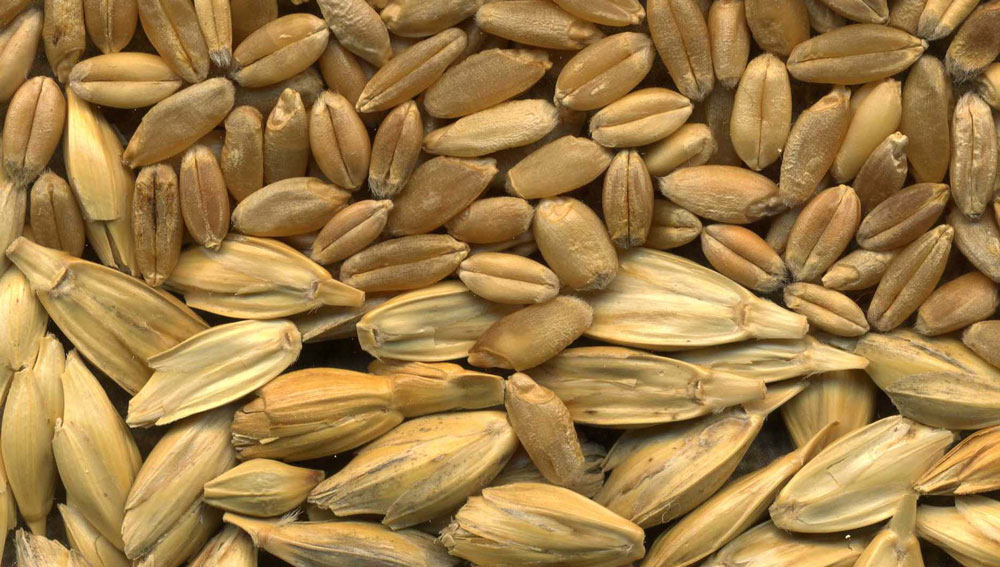IBBR Bioresources / Collections
IBBR maintains several important in vivo and ex-situ research collections of hundreds of different organisms (crop species, crop wild relatives, forest and fruit trees, bacteria, fungi, nematoda, etc.) with the aim of studying and preserving their functional biodiversity, and assessing their response to biotic and abiotic environmental factors. IBBR collections are part of the national network of biological research collections "BioMemory" (CNR/DiSBA), and are being indexed to the European Research Infrastructure "DiSSCo" (Distributed System of Scientific Collections). Part of the collections are also available on the platform "Global Biodiversity Information Facility" (GBIF).
Mediterranean Germplasm Genebank (MGG)

MGG is the agro-food plant seed collection maintained at the IBBR headquarter in Bari, Italy. Overall, MGG preserves more than 59.000 accessions of 870 species from 203 genera and 39 families (mainly Poaceae, Fabaceae, Solanaceae, Brassicaceae, Asteraceae, etc.). Over 13.000 samples have been directly collected through time and georeferenced by IBBR exploration teams, while others have been acquired from other Institutions through exchange activities. The main objective of MGG is the preservation of genetic resources of herbaceous plants of interest for the Mediterranean agriculture. Particular attention is dedicated to specific segments of plant genetic resources, such as local varieties (including "typical products") or endangered agro-ecotypes, wild relatives of crops and plants potentially useful for the extraction of bioactive or biotechnological compounds. The main commitments of MGG since 1970 are: (i) the collection, conservation and distribution of PGR; (ii) the characterization and evaluation of PGRs and the analysis of their genetic structure; (ii) the selection and pre-breeding of PGR, and the recognition of useful genes.
Web site: https://ibbr.cnr.it/mgd/
Contact: Gaetano Laghetti (gaetano.laghetti@ibbr.cnr.it)
Perennial Plants Germplasm Repository (PPGR)

The collection conatins about 220 accessions citrus fruits of great agronomic, historical and ornamental value. Over 200 accessions of both domestic and wild olive trees and about 480 accessions of grapevine. Several specimens threatened by genetic erosion or extinction belonging to the genera Capparis, Zelkova and Calendula were also included with some samples and populations. The varieties belong mainly to the Mediterranean agro-food systems, some of which have great economic importance. The main objective of the PPGR collection is the safeguard of genetic resources of perennial plants interesting for Italian and Mediterranean agriculture. The collection includes also Endophytic bacterial isolated and characterized from different host plants species from the Mediterranean area. Plants are grown in open fields. Maintenance: the callus and the seeds are stored in controlled temperature and humidity conditions and the germination and reproduction protocols are periodically carried out to ensure the replacement and reintegration of the seeds in the collection. Multiplication: the propagation is usually made by seed and cuttings.
Web site: https://ibbr.cnr.it//ppgr/, https://biomemory.cnr.it/collections/CNR-IBBR-PPGR
Contact: Francesco Carimi (francesco.carimi@ibbr.cnr.it), Loredana Abbate (loredana.abbate@ibbr.cnr.it)
Globe artichoke field collection (CYNARA)
CYNARA field collection in Bari contains some 50 globe artichoke varieties and an F1 segregating population. The artichoke is a highly heterozygous species and cannot be stored as seeds. Plants are maintained following standard agricultural practices, and it is necessary to detach offshooots from the mother plants also for assuring the replacement of missing samples due to environmental conditions and the presence of voles. The artichoke is a plant with a high nutraceutical value, and the distinct varieties, varying for flower head colour/shape/phenology, may countain different amounts of the beneficial compounds.
Web site: https://biomemory.cnr.it/collections/CNR-IBBR-CYNARA
Contact: Gabriella Sonnante (gabriella.sonnante@ibbr.cnr.it)
DNA and samples for genetic analyses on forest trees (DNAFOR)
The CNR-IBBR-DNAFOR collection includes more than 1.600 records of cryopreserved DNA and tissue samples of several forest tree species which have been collected during past and current national and EU projects, with the aim of investigating the genetic make-up of their populations and assessing their infraspecific biodiversity across Europe, from the biogeographical to the local level. Main taxa are:
Abies alba Mill.,
Picea abies Karst.,
Fagus sylvatica L.,
Pinus heldreichii H.Christ 1863,
Pinus sylvestris L.,
Quercus robur L.,
Pinus halepensis Mill. Dried tissues and DNA are preserved at -20 °C.
Web site: https://biomemory.cnr.it/collections/CNR-IBBR-DNAFOR
Contact: Andrea Piotti (andrea.piotti@ibbr.cnr.it)
Rhizobacteria promoting plant growth and bacteria degrading toxic pollutants (SUB)
The collection is maintained at Institute of Biosciences and Bioresources (IBBR) in Naples, Italy. It includes endophytic bacteria isolated from rice plants grown in Italy and in the State of Mali (West Africa), as well as polycyclic aromatic hydrocarbon degrading bacteria isolated from the industrial zone of the port of Marghera (Venice, Italy). Microorganisms are cryopreserved at -80 °C resuspended in growth media containing cryoprotectants (glycerol). Frozen microorganisms can be revived by thawing at 37 °C and inoculating into fresh culture medium. The main aim of the collection is to study bacteria interacting with legumes and cereals (e.g., N-fixation, phytohormones production, etc.) and their ability to improve host plants resistance to abiotic stresses.
Web site: https://biomemory.cnr.it/collections/CNR-IBBR-SUB
Contact: Carmen Bianco (carmelina.bianco@ibbr.cnr.it), Roberto Defez (roberto.defez@ibbr.cnr.it)
Mediterranean Plant Endophyte and Pathogens Culture Collection (MEPP)
MEPP preserve about 350 strains. The strains are mainly isolated from the Mediterranean agro-food systems as well as from spontaneous perennial and herbaceous plants, various microorganisms (bacteria, yeasts and fungi) of agro-food importance and with pathological behaviour are included. Microrganisms are isolated from different Mediterranean geographical areas. MEPP hosts also strains form collection of other Research centre or University. Main taxa: Culturable endophytic bacteria (mainly
Pseudomonas,
Erwinia,
Staphylococcus,
Pantoea,
Bacillus,
Vibrio), actinomycetes (
Streptomyces); some phytopathogenic filamentous fungi belonging to genera
Botrytis,
Neofabraea,
Alternaria,
Fusarium and
Monilinia.
Web site: https://biomemory.cnr.it/collections/CNR-IBBR-MEPP
Contact: Davide Pacifico (davide.pacifico@ibbr.cnr.it), Francesco Carimi (francesco.carimi@ibbr.cnr.it)
Fungi of Agro-Biotechnological Interest (FABI)
FABI collection includes about 600 endophitic fungi isolated from
Humulus lupulus and
Crocus sativus and about 200 strains of lignicolous fungi from various forest environments of central Italy. Each strain was isolated in PDA medium, sub-cultured and stored in pdb-glicerol at -80 °C. Strain typing is ongoing by molecular analysis of ITS region. The collection is screened for the identification of potential biocontrol agents and enzymatic activities and metabolites of biotechnological interest.
Web site: https://biomemory.cnr.it/collections/CNR-IBBR-FABI
Contact: Andrea Rubini (andrea.rubini@ibbr.cnr.it), Claudia Riccioni (claudia.riccioni@ibbr.cnr.it), Beatrice Belfiori (beatrice.belfiori@ibbr.cnr.it)
Annual Legumes / Perennial Grass Collection
The collection consists of 57 and 10 accessions of the annual legumes Vicia ervilia and Lathyrus cicera respectively, used at the experimental level as protein source in feed formulations; 8 accessions of the perennial grass Panicum virgatum, used for bio-energy production and 10 of each sexual and apomictic lines (20 lines in total) of the perennial grass Paspalum simplex used as a model to study apomictic reproduction.
Web site: https://biomemory.cnr.it/collections/CNR-IBBR-VLAPP
Contact: Fulvio Pupilli (fulvio.pupilli@ibbr.cnr.it)
Caenorhabditis elegans Italian collection (CelITAbase)
The frozen collection consists in more than 3.000 transgenic and mutant strains of non-parasitic nematodes, Caenorhabditis elegans species, collected over forty years. The collection, established in early ’80s by Dr. Paolo Bazzicalupo, is kept as triplicate, is unique in Italy and supports numerous Italian groups. C. elegans is the only multicellular animal model that can be frozen and stabs are stable for decades.
Web site: https://biomemory.cnr.it/browse/collections/CNR-IBBR-CELITABASE
Contact: Elia di Schiavi (elia.dischiavi@ibbr.cnr.it), Giuseppina Zampi (giuseppina.zampi@ibbr.cnr.it)
Other collections
- Medicago truncatula Mutant Collection (MEDIC)
Mutant collection based on the use of transposon tagging and EMS mutagenesis, approx. 4000 mutant plants.
Web page: https://biomemory.cnr.it/collections/CNR-IBBR-MEDIC
Contact: Ornella Calderini - Portici Seed Collection (PSC)
Collection of herbaceous species (Solanum: 200 accessions from 40 species; Aster: 30 species; Capsicum: 20 accessions; Arabidopsis: 100 mutant lines), including traditional Italian varieties of Solanum lycopersicum (70 accessions).
Web site: https://biomemory.cnr.it/browse/collections/CNR-IBBR-PSC
Contact: Maria Stefania Grillo, Giorgia Batelli - Olive Field Collection
Field collection of Olea europaea (400 varieties worldwide, 180 genotypes from controlled crosses, 70 ancient local varieties).
Contact: Luciana Baldoni, Roberto Mariotti, Soraya Mousavi - Antarctica and Artic Oceans Organisms
Collection of polar fish tissues and blood (frozen at -80 °C), marine bacterial strains and invertebrates (frozen at - 80 °C), ice, water and sediment samples (frozen at - 20 °C).
Contact: Cinzia Verde, Daniela Giordano











